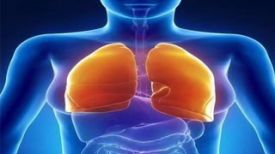
1. Introduction
-Intervertebral discogenic back pain is a common cause of axial back pain, caused by damage to one or more intervertebral discs, without any nerve root symptoms.
2. Composition of intervertebral discs
-Nucleus pulposus: central gel like substance, which is composed of water, proteoglycan, elastin and type II collagen fiber.
-Fiber ring fibrosis: A sturdy outer ring surrounding the nucleus pulposus, composed of multiple inclined layers of type I collagen bundles.
-The intervertebral disc is supplied with blood by the sinovertebral nerve and has relatively no blood vessels, resulting in poor healing ability.
3. Causes of discogenic back pain
-Pathophysiology: Degenerative intervertebral discs are divided into three stages: functional impairment, relative instability, and re stabilization. The characteristics of intervertebral disc structural damage include endplate fractures.
-The factors that accelerate intervertebral disc degeneration include family preference, occupation involving sitting posture and vibration force, intense physical activity, and repetitive movements.
-Pain mechanism: Intervertebral disc pain is caused by the inward growth of nerve fibers in the annular fissure, and the degenerated intervertebral disc nerve fibers penetrate deeper. Inflammatory markers participate in stimulation, leading to pain.
4. Clinical manifestations of intervertebral discs
-Duration of symptoms: acute (less than 6 weeks), subacute (6-12 weeks), chronic (over 12 weeks).
-Main symptoms: pain in the midline or paraspinal area, possible stiffness, occasional radiation in the buttocks or side abdomen, pain during forward flexion, lifting, axial loading, coughing/sneezing, and exacerbation during prolonged sitting.
-Examination findings: The patient's movements are normal, and standing is more comfortable when the pain is severe. There may be tenderness in the paraspinal area, limited lumbar movement, and normal neurological examination.
-Imaging examination:
-X-ray: may show narrowing of intervertebral disc space, endplate sclerosis, vacuum disc phenomenon, osteophyte formation, and can be used for flexion and extension X-ray examination to rule out instability.
-CT: It can better display bone spurs and is more sensitive than X-rays.
-MRI: It can provide the most detailed and comprehensive images. High signal intensity within the posterior ring indicates damage and may also show degenerative changes. There are three types of Modic changes.
-Fluorescence guided diagnosis: Injecting contrast agent into the nucleus pulposus of a suspected painful intervertebral disc to confirm whether it is the root cause of pain, but its application is not widespread due to invasiveness, accelerated degeneration risk, and high false alarms.
-Differential diagnosis: Lumbar sacral facet joint syndrome, spinal spondylolisthesis.
5. Treatment of discogenic back pain
-Non surgical treatment: Physical therapy and home exercise are the first steps, non steroidal anti-inflammatory drugs and other painkillers are used to control pain, and other measures include cognitive therapy and lifestyle changes. Non surgical treatment is effective, but the relief time may be long, and there is no significant difference in short-term or long-term effects compared to surgery.
-Minimally invasive surgery:
-Epidural steroid injection: It has therapeutic effects on discogenic back pain, and the mechanism may be anti-inflammatory.
-Thermal probe destroys sensory fibers: completed under fluoroscopy, with varying levels of evidence.
-Nucleoplasty: Using heat to denature and expel the nucleus pulposus for decompression.
-Intervertebral disc electric heating therapy, double needle correction surgery, and intervertebral disc PRP injection: using platelet rich plasma injection.
-Emerging treatment options:
-Surgical procedures: If conservative treatment is ineffective, surgery is required. Surgical options include disc removal, spinal fusion, and artificial disc replacement.
-Intervertebral discectomy: In specific cases, open or endoscopic examination methods can be used to remove the diseased intervertebral disc. If the indication is not clear and conservative measures are ineffective, consideration may be given.
-Total disc replacement surgery: The common indication is single segment diseases that do not involve small joints, preserving disc height and segment movement to prevent adjacent segment diseases from developing. Instability of the prosthesis is a complication.
-Complications: The degree of disability ranges from mild to severe, mostly temporary, including stress, depression, loss of work time, and complications caused by surgery.


